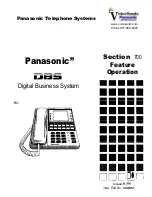
19
A Product of Progress Mfg. Inc.
If you have reached the maximum number of spacer washers (9), or if adjusting
temporarily due to a change in vehicle loading, use the tongue jack to unload the
spring bars. Raise the L-brackets one hole. Move the spring bars back over the
L-brackets and retract the tongue jack. Measure the wheel wells and check for
proper weight distribution.
Repeat Steps 6 and 7 until the measurements show that the hitch is distributing
weight well.
Over adjustment
occurs when there is too much weight being transferred to the
front axle of the tow vehicle. See Figure 25.
Figure 25 - Over-adjustment
Wheel well measurement
too low
Good adjustment
(line C target)
If
C
is lower than
A
, you need less weight distribution adjustment (see
line C
on
Weight Distribution Setup Table, Figure 18).
Overadjustment is a very dangerous situation where loss of control and jack-knifing
is possible, especially in wet or slick road conditions and/or with heavy trailers.
To correct over adjustment you must take some of the weight distribution force out
of the hitch by removing spacer washers, or lowering the L-brackets.
If this is the initial set up, use the tongue jack to unload the spring bars. Remove the
spring bars from the hitch head. Uncouple the trailer and pull the vehicle forward.
Remove the hitch head and remove a spacer washer. Repeat Steps 6 and 7 to adjust
and check weight distribution.
If you have reached the minimum number of spacer washers (5), or if adjusting
temporarily due to a change in vehicle loading, use the tongue jack to unload the
spring bars. Lower the L-brackets one hole. Move the spring bars back over the
L-brackets and retract the tongue jack. Measure the wheel wells and check for
proper weight distribution.
Repeat Steps 6 and 7 until the measurements show that the hitch is distributing
weight well.














































